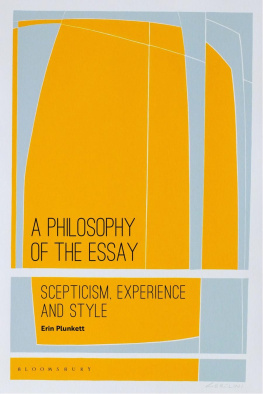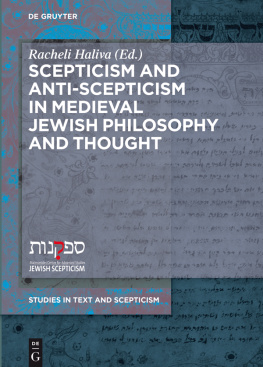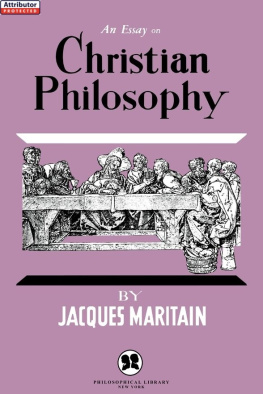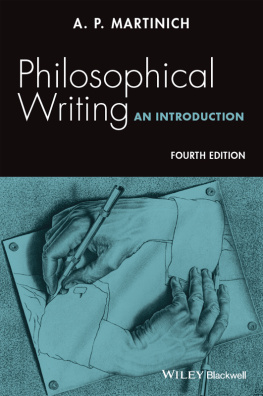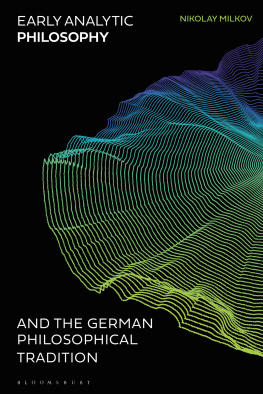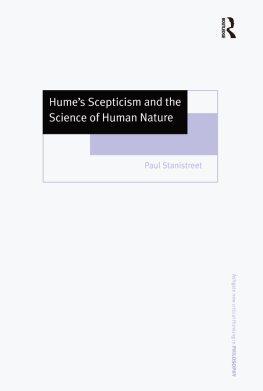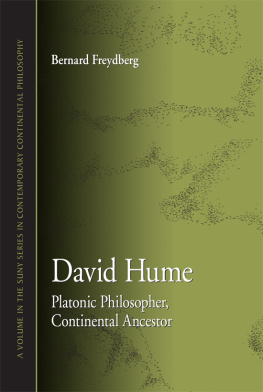A Philosophy of the Essay
Also available from Bloomsbury
Figural Philology , Adi Efal
Derrida, Badiou and the Formal Imperative , Christopher Norris
Poetry and Revelation , Kevin Hart
The Poetic Imagination in Heidegger and Schelling , Christopher Yates
A Philosophy of the Essay
Scepticism, experience and style
ERIN PLUNKETT

BLOOMSBURY ACADEMIC
Bloomsbury Publishing Plc
50 Bedford Square, London, WC1B 3DP, UK
1385 Broadway, New York, NY 10018, USA
BLOOMSBURY, BLOOMSBURY ACADEMIC and the Diana logo are trademarks of Bloomsbury Publishing Plc
First published in Great Britain 2018
Copyright Erin Plunkett, 2018
Erin Plunkett has asserted her right under the Copyright, Designs and Patents Act, 1988, to be identified as Author of this work.
Cover design: Paula Navarro Moreno
Cover image: Untitled, 2015, Acrylic on Paper Dominique Gerolini
All rights reserved. No part of this publication may be reproduced or transmitted in any form or by any means, electronic or mechanical, including photocopying, recording, or any information storage or retrieval system, without prior permission in writing from the publishers.
Bloomsbury Publishing Plc does not have any control over, or responsibility for, any third-party websites referred to or in this book. All internet addresses given in this book were correct at the time of going to press. The author and publisher regret any inconvenience caused if addresses have changed or sites have ceased to exist, but can accept no responsibility for any such changes.
A catalogue record for this book is available from the British Library.
A catalog record for this book is available from the Library of Congress.
ISBN: HB: 978-1-3500-4998-7
ePDF: 978-1-3500-4999-4
eBook: 978-1-3500-5000-6
Typeset by Deanta Global Publishing Services, Chennai, India
To find out more about our authors and books visit www.bloomsbury.com and sign up for our newsletters.
For Eugenio
Contents
My research could not have been carried out without the support of Royal Holloway Universitys Crossland Scholarship and College Research Scholarship.
Thanks to Andrew Bowie, Stephen Mulhall, and Simon Glendinning for their helpful suggestions on this manuscript and to Henry Somers-Hall for making me work harder.
Habe nun, ach! Phil osophie,
Juristerei und Medizin,
Und leider auch Theologie
Durchaus studiert, mit heiem Bemhn.
Da steh ich nun, ich armer Tor!
Und bin so klug als wie zuvor;
Heie Magister, heie Doktor gar
Und ziehe schon an die zehen Jahr
Herauf, herab und quer und krumm
Meine Schler an der Nase herum-
Und sehe, da wir nichts wissen knnen!
Dafr ist mir auch alle Freud entrissen,
Bilde mir nicht ein, was Rechts zu wissen...
Ah! Now Ive done Philosophy,
Ive finished Law and Medicine,
And sadly even Theology:
Taken fierce pains, from end to end.
Now here I am, a fool for sure!
No wiser than I was before:
Master, Doctors what they call me,
And Ive been ten years, already,
Crosswise, arcing, to and fro,
Leading my students by the nose,
And see that we can know nothing!
Instead all Joy is snatched away,
Whats worth knowing, I cant say...
Goethe, Faust , Part I: Scene i
A few years ago I had the pleasure of discovering Francesco Queirolos Il Disinganno (1753-54) at the chapel of Sansevero in Naples. The sculpture depicts a man tangled in a huge, heavy net, wrought exquisitely in marble, which drapes in folds over his head and down the length of his body. He strains under the immense weight, yet his posture is not one of resignation. His right hand reaches over his head, gripping the net and lifting it from his face. With an expression of curiosity, or hope, he looks down onto the face of a winged figure a radiant child who returns his gaze and whose position, foot not quite touching the ground, suggests the opposite of everything signified by the heavy net. The childs small hand lifts the net from the mans face and torso, inviting him to step out into his freedom, as if escape were as simple as the act of seeing his way out. The mans age suggests that he carries the experience of many years and has seen much. Yet the inscription, qui non vident videant , a reference to Christs healing of the blind man, offers the possibility both of failing to see and of seeing anew. The title of the work, Disinganno , suggests the removal of illusion, a lifting of the veil that conceals.
Can there be an escape from the tangled net of scepticism, and might it resemble this scene? Not the opening up of a higher or more privileged view, but a seeing anew of what there is to be seen in the same? What would a philosophy look like that cultivated this kind of movement?
In a sense scepticism always holds out the promise of a more perfect way of seeing this lies at the root of its rejection of everyday vision. The senses are unreliable, and reason has its monsters so the sceptic must locate this more perfect vision elsewhere. It may be the wisdom of God, unencumbered by the errors of a body and the flow of time. Or it may lie in a rigorous method, something like Descartess search for clear and distinct ideas, or the foundationalist attempt to ground knowledge claims absolutely, or the pragmatist attempt to circumscribe merely adequate criteria of justification. This study is motivated by the idea that all such accounts leave us tangled within the net and ultimately fail to recognize the significance of the sceptical moment. As Stanley Cavell argues, recovering from scepticism, which is not the same as refuting it, requires a turn away from philosophy as epistemology and a philosophical reckoning with the everyday, as the site of both illusion and concealment; in other words, we discover the everyday, our common ground, not as something that we already know or know well enough, but as something that demands our care, despite our ignorance. For philosophy, this entails an examination of the existential ground of speculation, the enabling conditions of human knowledge and action. Such an examination makes special demands on the practice of philosophical writing, for to avoid imposing the structure of thought on the structure of being, it must reflect the shape or the tempo of existence itself. Escaping from scepticisms net thus becomes a poetic concern.
One of the overarching questions in this study is: what does style have to do with thinking? For such an unassuming question, it is deeply divisive. To many contemporary philosophers in the Anglophone tradition, the neutrality of texts and the separability of essential content from contingent form is taken for granted. As a reading strategy, this has its advantages, allowing a great number of texts to be compared with one another as if they were speaking about the same things: a relatively fixed set of philosophical problems. And given the ancient quarrel between philosophy and poetry, it is perhaps not surprising that the insights of literary criticism should be largely ignored by philosophy. Despite the broad application of the term text in literary and cultural studies and despite Richard Rortys (1978) still-timely reminder that, whatever else it may be, philosophy is a kind of writing, there remain few philosophical studies within the Anglophone tradition dedicated to questions of genre or form in modern philosophical texts. The formal qualities of philosophical works are rarely included in philosophical pedagogy. This resistance to the literary dimension of philosophical texts has been thoroughly diagnosed, both by Rorty and by the subject of his 1978 essay, Jacques Derrida, as a misunderstanding of the nature of language and a misguided attempt by philosophy to borrow its legitimacy from the objectivity of the sciences, holding to an ideal of the transparent, authorless text, while distancing itself from rhetoric. In recent years, Beryl Lang (2010) has tried to popularize the study of rhetorical strategies as expressions of philosophical commitments, pointing to a blind spot in contemporary analytic philosophy. Jonathan Lavery (2007, 2010) has argued that genre in particular is a useful lens through which to read philosophical texts, one that can supplement logical or semantic analysis and bring to light features of a text that would otherwise remain hidden.

